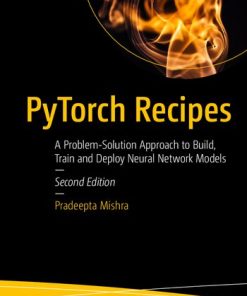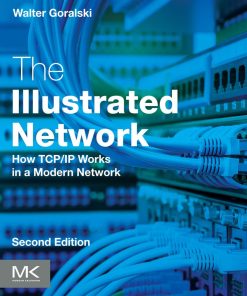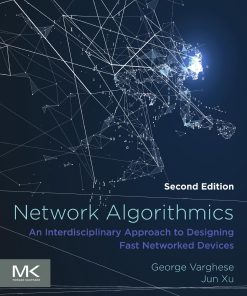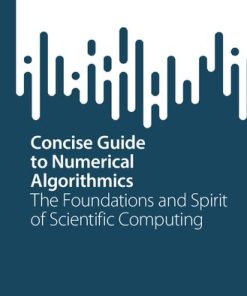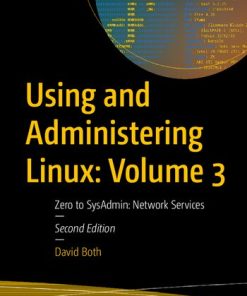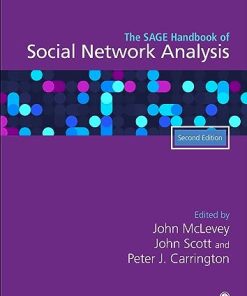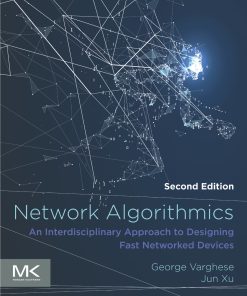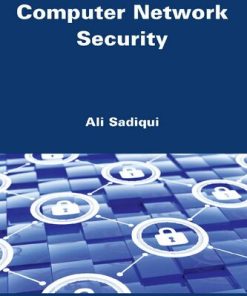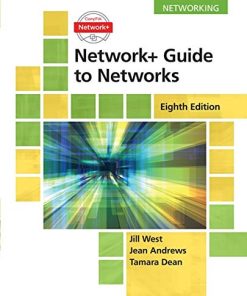(Ebook PDF) Network Algorithmics 2nd Edition by George Varghese, Jun Xu 0128099860 9780128099865 full chapters
$50.00 Original price was: $50.00.$25.00Current price is: $25.00.
Network Algorithmics 2nd Edition by George Varghese, Jun Xu – Ebook PDF Instant Download/DeliveryISBN: 0128099860, 9780128099865
Full download Network Algorithmics 2nd Edition after payment
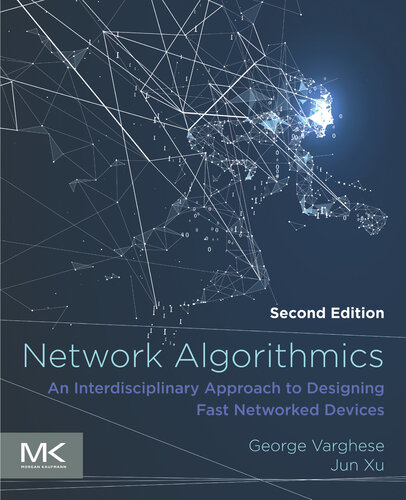
Product details:
ISBN-10 : 0128099860
ISBN-13 : 9780128099865
Author: George Varghese, Jun Xu
Network Algorithmics: An Interdisciplinary Approach to Designing Fast Networked Devices, Second Edition takes an interdisciplinary approach to applying principles for efficient implementation of network devices, offering solutions to the problem of network implementation bottlenecks. In designing a network device, there are dozens of decisions that affect the speed with which it will perform – sometimes for better, but sometimes for worse. The book provides a complete and coherent methodology for maximizing speed while meeting network design goals. The book is uniquely focused on the seamless integration of data structures, algorithms, operating systems and hardware/software co-designs for high-performance routers/switches and network end systems.
Network Algorithmics 2nd Table of contents:
Part 1: The rules of the game
Introduction
Chapter 1: Introducing network algorithmics
Abstract
1.1. The problem: network bottlenecks
1.2. The techniques: network algorithmics
1.3. Exercise
Chapter 2: Network implementation models
Abstract
2.1. Protocols
2.2. Hardware
2.3. Network device architectures
2.4. Operating systems
2.5. Summary
2.6. Exercises
References
Chapter 3: Fifteen implementation principles
Abstract
3.1. Motivating the use of principles—updating ternary content-addressable memories
3.2. Algorithms versus algorithmics
3.3. Fifteen implementation principles—categorization and description
3.4. Design versus implementation principles
3.5. Caveats
3.6. Summary
3.7. Exercises
References
Chapter 4: Principles in action
Abstract
4.1. Buffer validation of application device channels
4.2. Scheduler for asynchronous transfer mode flow control
4.3. Route computation using Dijkstra’s algorithm
4.4. Ethernet monitor using bridge hardware
4.5. Demultiplexing in the x-kernel
4.6. Tries with node compression
4.7. Packet filtering in routers
4.8. Avoiding fragmentation of LSPs
4.9. Policing traffic patterns
4.10. Identifying a resource hog
4.11. Getting rid of the TCP open connection list
4.12. Acknowledgment withholding
4.13. Incrementally reading a large database
4.14. Binary search of long identifiers
4.15. Video conferencing via asynchronous transfer mode
References
Part 2: Playing with endnodes
Introduction
Chapter 5: Copying data
Abstract
5.1. Why data copies
5.2. Reducing copying via local restructuring
5.3. Avoiding copying using remote DMA
5.4. Broadening to file systems
5.5. Broadening beyond copies
5.6. Broadening beyond data manipulations
5.7. Conclusions
5.8. Exercises
References
Chapter 6: Transferring control
Abstract
6.1. Why control overhead?
6.2. Avoiding scheduling overhead in networking code
6.3. Avoiding context-switching overhead in applications
6.4. Scalable I/O Notification
6.5. Avoiding system calls or Kernel Bypass
6.6. Radical Restructuring of Operating Systems
6.7. Reducing interrupts
6.8. Conclusions
6.9. Exercises
References
Chapter 7: Maintaining timers
Abstract
7.1. Why timers?
7.2. Model and performance measures
7.3. Simplest timer schemes
7.4. Timing wheels
7.5. Hashed wheels
7.6. Hierarchical wheels
7.7. BSD implementation
7.8. Google Carousel implementation
7.9. Obtaining finer granularity timers
7.10. Conclusions
7.11. Exercises
References
Chapter 8: Demultiplexing
Abstract
8.1. Opportunities and challenges of early demultiplexing
8.2. Goals
8.3. CMU/Stanford packet filter: pioneering packet filters
8.4. Berkeley packet filter: enabling high-performance monitoring
8.5. Pathfinder: factoring out common checks
8.6. Dynamic packet filter: compilers to the rescue
8.7. Conclusions
8.8. Exercises
References
Chapter 9: Protocol processing
Abstract
9.1. Buffer management
9.2. Cyclic redundancy checks and checksums
9.3. Generic protocol processing
9.4. Reassembly
9.5. Conclusions
9.6. Exercises
References
Part 3: Playing with routers
Introduction
Chapter 10: Exact-match lookups
Abstract
10.1. Challenge 1: Ethernet under fire
10.2. Challenge 2: wire speed forwarding
10.3. Challenge 3: scaling lookups to higher speeds
10.4. Summary
10.5. Exercise
References
Chapter 11: Prefix-match lookups
Abstract
11.1. Introduction to prefix lookups
11.2. Finessing lookups
11.3. Non-algorithmic techniques for prefix matching
11.4. Unibit tries
11.5. Multibit tries
11.6. Level-compressed (LC) tries
11.7. Lulea-compressed tries
11.8. Tree bitmap
11.9. Binary search on ranges
11.10. Binary search on ranges with Initial Lookup Table
11.11. Binary search on prefix lengths
11.12. Linear search on prefix lengths with hardware assist
11.13. Memory allocation in compressed schemes
11.14. Fixed Function Lookup-chip models
11.15. Programmable Lookup Chips and P4
11.16. Conclusions
11.17. Exercises
References
Chapter 12: Packet classification
Abstract
12.1. Why packet classification?
12.2. Packet-classification problem
12.3. Requirements and metrics
12.4. Simple solutions
12.5. Two-dimensional schemes
12.6. Approaches to general rule sets
12.7. Extending two-dimensional schemes
12.8. Using divide-and-conquer
12.9. Bit vector linear search
12.10. Cross-producting
12.11. Equivalenced cross-producting
12.12. Decision tree approaches
12.13. Hybrid algorithms
12.14. Conclusions
12.15. Exercises
References
Chapter 13: Switching
Abstract
13.1. Router versus telephone switches
13.2. Shared-memory switches
13.3. Router history: from buses to crossbars
13.4. The take-a-ticket crossbar scheduler
13.5. Head-of-line blocking
13.6. Avoiding HOL blocking via output queuing
13.7. Avoiding HOL blocking via virtual output queuing
13.8. Input-queued switching as a bipartite matching problem
13.9. Parallel iterative matching (PIM)
13.10. Avoiding randomization with iSLIP
13.11. Computing near-optimal matchings via learning
13.12. Sample-and-compare: a stunningly simple adaptive algorithm
13.13. SERENA: an improved adaptive algorithm
13.14. The queue-proportional sampling strategy
13.15. QPS implementation
13.16. Small-batch QPS and sliding-window QPS
13.17. Combined input and output queueing
13.18. Scaling to larger and faster switches
13.19. Scaling to faster link speeds
13.20. Conclusions
13.21. Exercises
References
Chapter 14: Scheduling packets
Abstract
14.1. Motivation for quality of service
14.2. Random early detection
14.3. Approximate fair dropping
14.4. Token bucket policing
14.5. Multiple outbound queues and priority
14.6. A quick detour into reservation protocols
14.7. Providing bandwidth guarantees
14.8. Schedulers that provide delay guarantees
14.9. Generalized processor sharing
14.10. Weighted fair queueing
14.11. Worst-case fair weighed fair queueing
14.12. The data structure and algorithm for efficient GPS clock tracking
14.13. Implementing WFQ and WF2Q
14.14. Quick fair queueing (QFQ)
14.15. Towards programmable packet scheduling
14.16. Scalable fair queuing
14.17. Summary
14.18. Exercises
References
Chapter 15: Routers as distributed systems
Abstract
15.1. Internal flow control
15.2. Internal Link Striping
15.3. Distributed Memory
15.4. Asynchronous updates
15.5. Conclusions
15.6. Exercises
References
Part 4: Endgame
Introduction
Chapter 16: Measuring network traffic
Abstract
16.1. Why measurement is hard
16.2. Reducing SRAM width using DRAM backing store
16.3. A randomized counter scheme
16.4. Maintain active counters using BRICK
16.5. Extending BRICK for maintaining associated states
16.6. Reducing counter width using approximate counting
16.7. Reducing counters using threshold aggregation
16.8. Reducing counters using flow counting
16.9. Reducing processing using sampled NetFlow
16.10. Reducing reporting using sampled charging
16.11. Correlating measurements using trajectory sampling
16.12. A concerted approach to accounting
16.13. Computing traffic matrices
16.14. Sting as an example of passive measurement
16.15. Generating better traffic logs via data streaming
16.16. Counting the number of distinct flows
16.17. Detection of heavy hitters
16.18. Estimation of flow-size distribution
16.19. The Tug-of-War algorithm for estimating F2
16.20. Conclusion
16.21. Exercises
References
Chapter 17: Network security
Abstract
17.1. Searching for multiple strings in packet payloads
17.2. Approximate string matching
17.3. IP traceback via probabilistic marking
17.4. IP traceback via logging
17.5. Detecting worms
17.6. EarlyBird system for worm detection
17.7. Carousel: scalable logging for intrusion prevention systems
17.8. Conclusion
17.9. Exercises
References
Chapter 18: Conclusions
Abstract
18.1. What this book has been about
18.2. What network algorithmics is about
18.3. Network algorithmics and real products
18.4. Network algorithmics: back to the future
18.5. The inner life of a networking device
People also search for Network Algorithmics 2nd:
varghese network algorithmics
network algorithmics 2nd edition pdf
network algorithmics 2nd edition
network algorithmics george varghese
network algorithmics book
Tags:
Network,Algorithmics,George Varghese,Jun Xu
You may also like…
Computers - Artificial Intelligence (AI)
Computers - Networking
The Illustrated Network: How TCP/IP Works in a Modern Network Walter Goralski
Computers - Networking
Network Algorithmics: An Interdisciplinary Approach to Designing Fast Networked Devices 2nd Edition
Computers - Algorithms and Data Structures
Computers - Operating Systems
Using and Administering Linux: Volume 3 Zero to SysAdmin: Network Services 2nd Edition
Engineering - Social & Cultural Aspects of Technology
Computers - Security
Computers - Networking




